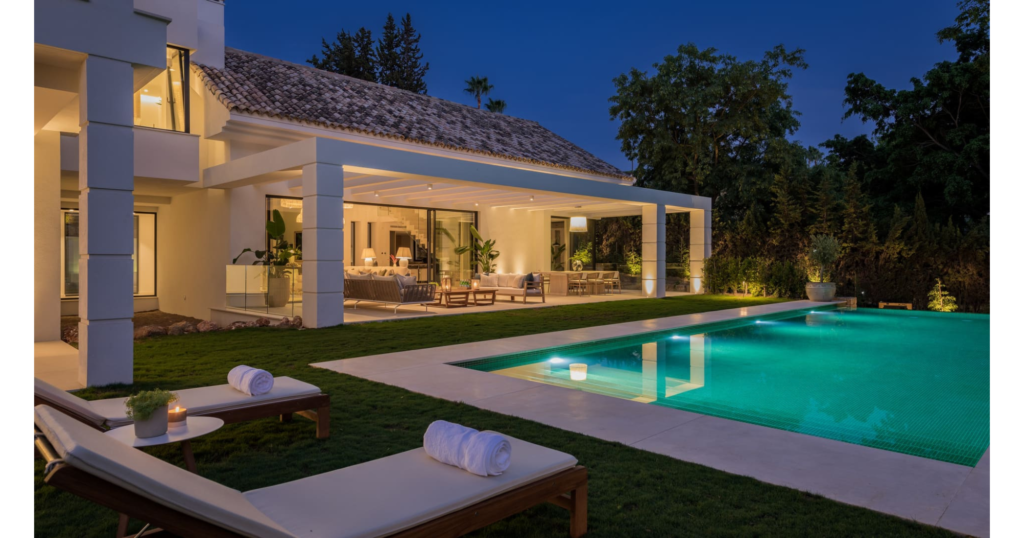Something rare is happening in Pacific Palisades.
After the fires, the landscape didn’t just change physically – it changed philosophically.
The neighborhood that once defined the California dream with glass façades and panoramic views is now asking different questions:
What is worth rebuilding?
What should we keep, and what must evolve?
The answer, as I see it, is design with intelligence.
Not technology for its own sake – but intelligence as an ecosystem.
Pacific Palisades has become the testing ground for a new kind of high-end living,
where luxury isn’t an aesthetic – it’s a system of resilience, consciousness, and connection.
Beyond Sustainability: Toward Regenerative Design
We used to speak about “sustainable homes,”
as if the goal was simply to do less harm.
But the new generation of Pacific Palisades homes aims higher.
The mindset now is regenerative – homes that give back more than they consume.
They harvest sunlight as data, filter water as experience, and breathe as naturally as the hillside itself.
Walls are not just boundaries anymore – they are intelligent membranes.
They sense temperature, adapt light, and learn your rhythms.
The home has become a living organism – designed not to dominate nature, but to reintegrate with it.
This is not futuristic design; it’s responsible design, guided by neuroscience, climate intelligence, and empathy.
Human-Centered Innovation
True innovation in design begins with the human nervous system.
After the trauma of destruction, people don’t just want new walls – they want a new sense of safety.
That safety is no longer about alarms and gates; it’s about how space regulates the body.
Light that supports circadian rhythm.
Textures that calm sensory overstimulation.
Acoustics that soften external chaos without muting life.
In my work, I often describe this approach as “Design for Cognitive Restoration.”
It’s about restoring coherence – between body, space, and environment.
Pacific Palisades is the perfect landscape for this idea:
close to nature, yet driven by innovation.
The design response here must merge emotion with engineering –
not to create comfort as an indulgence, but as a biological necessity.
AI, Data, and the Future of Personal Architecture
Artificial intelligence is quietly entering the world of high-end design – not as a replacement for intuition, but as a mirror for it.
In the new Pacific Palisades projects, we see homes equipped with adaptive systems:
lighting that adjusts to mood and daylight patterns,
climate systems that read humidity and stress levels,
and layouts that evolve over time through data-driven spatial feedback.
AI in interior design isn’t about automation – it’s about empathy at scale.
When technology begins to understand human rhythm,
design becomes predictive, not reactive.
The home transforms into an extension of human awareness –
it learns, it remembers, it aligns.
Luxury Reimagined: From Statement to Conscious Experience
Luxury in Pacific Palisades has shifted from impressive to intelligent.
The new wealth expresses itself not through excess,
but through depth – in craftsmanship, material integrity, and emotional intelligence.
Imagine walking into a living space that greets you with warmth not because of its décor,
but because of its coherence.
Where every proportion, every color temperature, every reflection of light
has been tuned to support your physiology.
That’s not aesthetic – that’s neuro-design at its highest level.
In these homes, design no longer tries to impress the eye – it’s designed to align with the brain.
That’s what true innovation looks like.
The Rebirth of a Landscape
Pacific Palisades is becoming a symbol of something bigger than reconstruction –
it’s a manifesto for the future of living.
The architecture here is no longer about protection from nature,
but partnership with it.
Homes are being designed to regenerate oxygen, to manage water through intelligent landscapes,
and to serve as microclimates that heal both the people and the place.
We are not rebuilding what was lost –
we are redefining what it means to live beautifully, responsibly, and intelligently.
And in that, Pacific Palisades is no longer just a neighborhood.
It’s a blueprint for the next generation of luxury living –
one where architecture listens, learns, and evolves with the human spirit.






